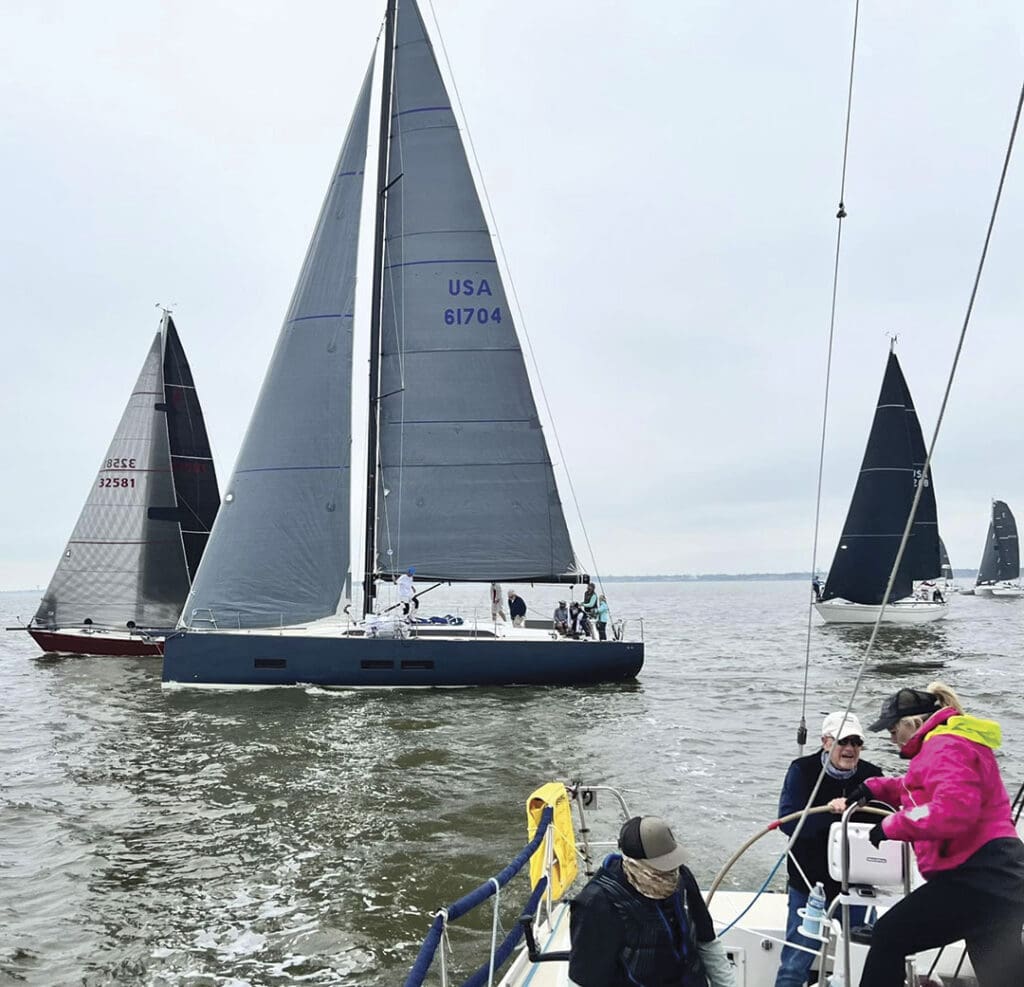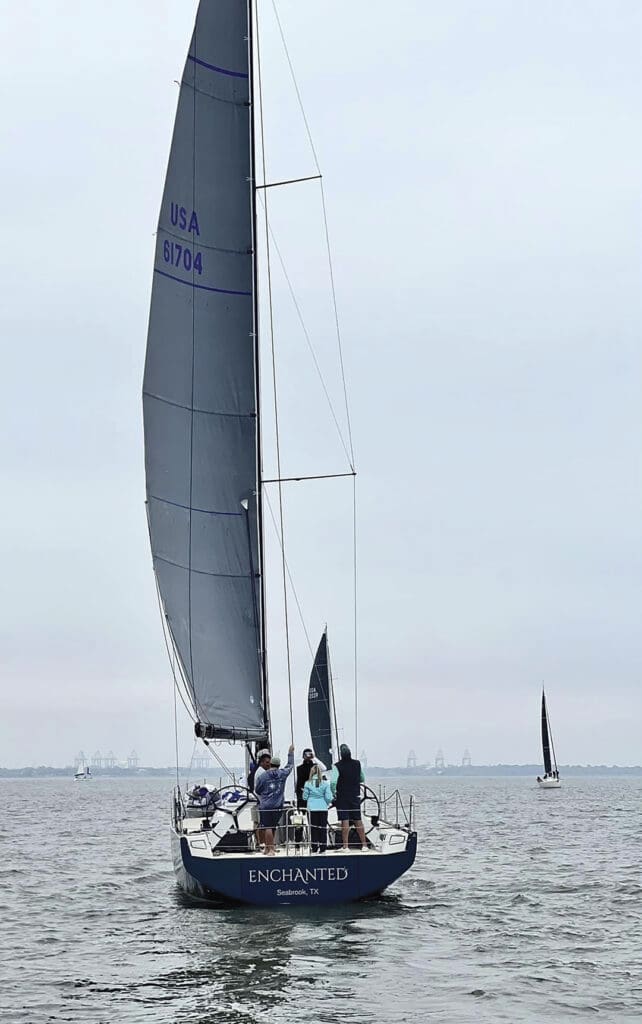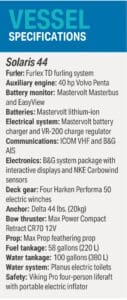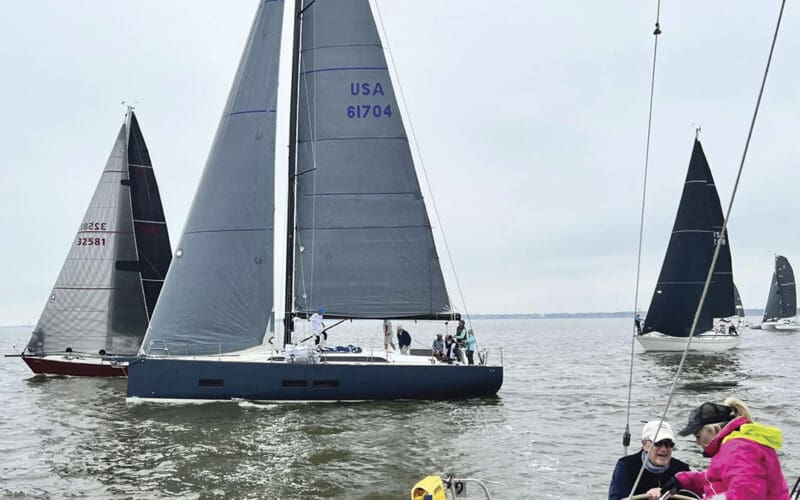
Solaris Yachts of Aquilea, Italy, designs and builds a unique line of state-of-the-art cruising yachts for sailors who desire the best mix of speed, stability, comfort and ease of maneuvering in all kinds of weather. With sailing vessels ranging in size from 40 to 111 feet LOA, you can sail the world’s oceans in a deck and cabin setting that embraces a rare blend of easy handling, ergonomics and simple, functional luxury.
The Solaris 44 is emblematic of the company’s focus on technology and responsiveness to the needs of crew and passengers. Measuring a modest 44 feet, roughly the size of today’s typical cruising yacht, the Solaris 44 was made for short-handed crew. Designed by Javier Soto Acebal, all the lines, or running rigging, on this vessel lead to only two winches, both within easy reach of the helm. Even in the middle of a stormy night, a single crew member should have little trouble handling the jib and main sheets.

When you prepare to choose the specific design of the Solaris 44’s deck layout, you can take advantage of the ample space abaft of the helm—her beam is 13 feet, eight inches all the way back to the transom—by opting for a large stern cabin with wide twin berths. The standard version of the rear deck layout is comprised of a roomy sail locker, large cockpit lockers and an independent storage space for the dinghy or life raft.
The quality and finish of the interior joinery are distinctive features of Solaris, renowned and appreciated among the many Solaris owners crossing the world’s oceans today. The refined selection of hardwoods, combined with the skilled, handmade care in the details, yields an airy, sophisticated, yet warm feeling to both the interior and exterior. The end result, according to Solaris, is a vessel that responds to every anticipated need of the crew.
Every model in the Solaris range, unlike in some other mass production yachts on the market, is built in accordance with the strict rules of the Maxi Ocean Yachts (MOY), even though these rules are intended to pertain only to larger yachts. Solaris meets or beats structural MOY requirements with materials contributing to stiff, solid, stress-resistant construction. The main and structural bulkheads are built of composite with a minimum 1.5-inch thickness and are laminated to the hull, rather than glued together with silicone as is the common practice in many mass-produced boats.
The main bulkhead and principal reinforcement design form what is essentially a “structural cage” bearing the local loads of this yacht, such as the mast, chain plates and keel. Solaris claims, “The yacht is unaffected by any deformation and torsion in all sea and wind conditions.” To achieve this, all joinery is laminated to the hull, contributing to the overall, essentially monocoque composite structure of the cabin and deck.
The chain plates, which in most yachts are fabricated of 316 stainless steel, are made of 28 vacuum-bonded layers of unidirectional and bidirectional fibers. The keel, sustained by a one-inch-thick, 316 stainless steel flange plate, is connected to the hull backing plate by 1.25-inch-thick stainless steel bolts.
 Two characteristics when combined together distinguish Solaris Yachts from its competition, according to company spokesman Luigi Magliari Galante. First are the organization’s 35 years of experience in building and refitting yachts of all sizes and types. Second is the Solaris yard’s location by the sea, permitting sea trials in order to refine virtually every design solution before commencing production. If there is something requiring additional polishing in a given design, it is a quick jump from sea trial to design modification in order to iron out the details.
Two characteristics when combined together distinguish Solaris Yachts from its competition, according to company spokesman Luigi Magliari Galante. First are the organization’s 35 years of experience in building and refitting yachts of all sizes and types. Second is the Solaris yard’s location by the sea, permitting sea trials in order to refine virtually every design solution before commencing production. If there is something requiring additional polishing in a given design, it is a quick jump from sea trial to design modification in order to iron out the details.
Experience and sea trials have demonstrated that most yachts suffer from the effects of wind and sea, resulting in at least some hull and cabin deformation over time. In some boats, hull and cabin creaking, plus the occasional crack in hull and deck structures, gradually develop, threatening the overall integrity of the vessel’s hull and superstructure. Though usually expected and generally benign, these fissures can lead to an unacceptable degree of failure at some point in a vessel’s lifetime.
For this reason, Galante points out, the priority of Solaris designers and engineers has been developing and perfecting “the non-deformation of the yacht derived through structural continuity,” or in other words, the development of monocoque, or monolithic, structural designs.
Step aboard a Solaris 44 and stroll around the wide, spacious, flush teak deck surrounding a swept, low-profile cabin top, tinted skylights and portlights, dual helms and running rigging arranged neatly and safely out of the way. Also take note of the separate storage area in the transom for the dinghy.
Then step down the companionway and behold a wide, spacious cabin with ample seating and a large table mounted on a pair of highly polished, adjustable stainless mounts. An ample galley with refrigeration and freezer provide enough room for food prep adjacent to the dining area. Long, tinted portlights line both sides of the cabin and allow enough light to cheer up the cabin while controlling the sun’s glare. Walk forward to the vee-berth and behold a large, wide bunk with a lighted bookshelf, a spacious closet and a seat for dressing while underway. Your stroll through the Solaris 44 will reveal a yacht that is neither too big nor too small, easily managed by one or two crew members, large enough for a small family, yet still allowing a cozy feeling for a small crew. n

